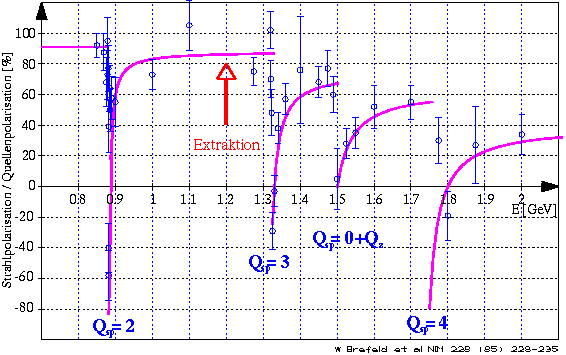Polarization in the booster Synchrotron
The depolarization in the booster synchrotron, the former 2.5 GeV main
accelerator, has already been studied in 1980.

Depolarizing Resonances
In the energy range from 700 MeV to 2.1 GeV 4 depolarizing resonances show up,
three of them imperfection ones. The polarization degree drops down to zero or
even below zero when the sinus shapes acceleration ramp reaches the resonance.
At this moment the top of the sinus at extraction energy meets the resonance
energy so that the depolarization effect is maximum. As the extraction energy
increases further the resonance is crossed over and so the polarization
recovers. But it does not reach its old value, because the resonance has to be
crossed with a finite crossing speed. If the beam is transferred below
the third imperfection resonance
(1.32 GeV) to the main stretcher ring, a
polarization loss of 5% is caused by the resonances in the synchrotron. This
is small compared to what depolarization resonances may cause in the stretcher
ring. So no special correction elements are necessary for the booster synchrotron.
|



 Printer version
Printer version
 Deutsche Version
Deutsche Version